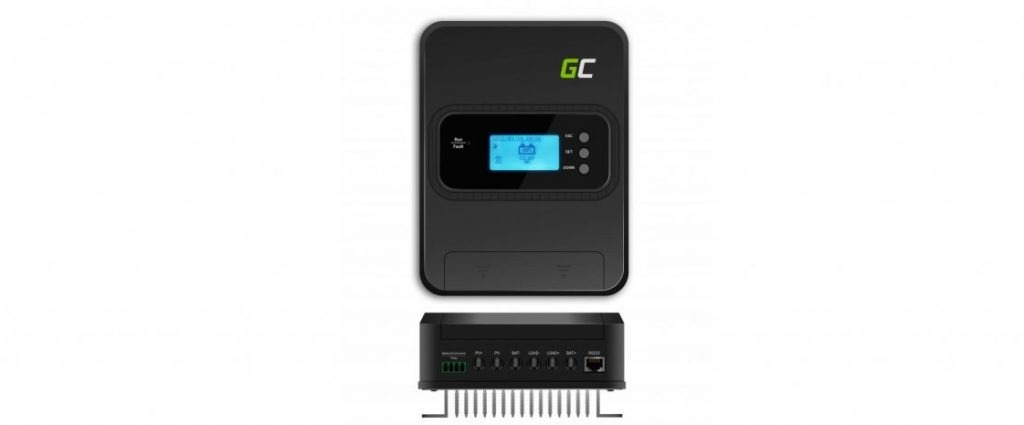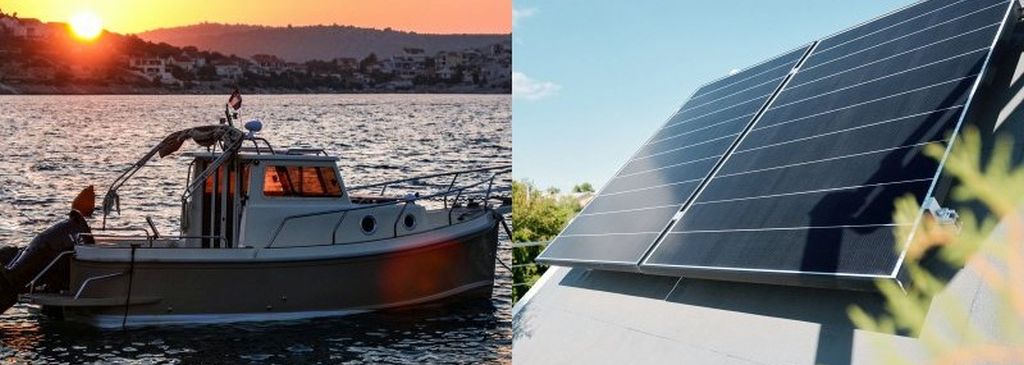Solar energy is becoming increasingly popular in our country. Photovoltaic panels can be seen not only on the roofs of modern facilities, but also on older buildings whose owners realised the advantages of green power. PV installations can provide enough power for a whole household – starting from the TV and other equipment, to charging the batteries in mobile devices. While talking about PV it’s good to mention a tiny thing known as a solar charge controller. What is it and why is it good to have one?
In this article you will find out:
- how a solar charge controller works,
- what safeguards a charge controller has,
- how to connect a solar charge controller,
- what it can be used for.
Solar charge controller – what is it?
A solar charge controller, also known as a charge regulator, is a device that maximizes the power from photovoltaic panels. Its main task is to convert solar energy into electric current whose parameters match the requirements of specific devices in regards to charging their batteries. Using high quality electronic components means a solar charge controller can work even with most extensive photovoltaic installations, ensuring maximum efficiency and 100% safety.

How does a solar charge controller work?
A charge regulator connects a PV panel to a gel battery, thus ensuring appropriate charging parameters. It offers sufficient protection from overvoltage and from excessive depletion. At the same time it prevents the power from running backwards to the panel at night, when the installation loses its source of energy.
A solar regulator also provides valuable information: on the LCD or LED display you can check out the details of the status, breakdowns or battery level. Using a solar charge controller is necessary in every PV system, because without it, batteries will be quickly damaged as a result of excessive voltage or deep discharge.
Types of solar charge controllers
We have two types of solar charge controllers:
- A PWM charge regulator – sends impulses to the battery in an attempt to provide as much energy as possible within a short time span. The closer the battery is to being fully charged, the slower and less frequent the impulses become. When the battery is nearly full, the controller ceases to provide energy.
- An MPPT charge regulator – is similar to the PWM one, the difference being that it keeps checking the voltage of the solar panel and chooses the maximum power point. This makes it much more effective when the sunlight is weaker, e.g. in the morning or in a shaded place. MPPT regulators produce up to 30% more power than PWM models.

What safeguards does a solar charge controller have?
As an advanced device used in photovoltaic installations, a solar charge regulator must come with all the safeguards that guarantee its reliable operation in any circumstances. We will show it on the example of an MPPT model available in our online store. High-quality electronic components guarantee:
- protection against overvoltage,
- protection against short-circuit,
- protection against overcharge and discharge,
- protection against reverse polarity,
- temperature monitoring,
- solar panel voltage monitoring.
As a result, the device will remain in shape and be safe to use for years, not only at home, but also in a camper or in a summer cottage.
How to connect a solar charge controller?
Installing a solar charge controller involves a few easy steps. It’s important, though, for these steps to be completed nu by an experienced specialist, who will guarantee safe and reliable operation of the installation.
- First of all, the controller needs to be connected to the solar panels. On this occasion, it’s vital to note the maximum voltage managed by the regulator.
- Then the battery should be connected to the charge controller. The regulator should automatically detect its voltage and adjust the charging parameters accordingly.
- Afterwards, an inverter must be connected to the battery.
- Finally, the inverter can be connected to the device you want to charge with green power.

What can a solar charge controller be used for?
As you know, a solar charge controller is most often used in home PV installations. Combined with the inverter, it provides energy to the devices connected to the grid. But the controller may be used for other things as well. It is a perfect solution when you’re on the go. The users assemble it in campers or on yachts. It is also a crucial element of PV systems on campsites, so that the visitors can safely recharge their mobile devices when they come in for the night. Solar charge regulators are also useful in summer cottages.
You will find versatile, high-quality solar charge controllers in Battery Empire. Explore our product portfolio and choose a reliable regulator for your PV installation!
Veronica Jones
Related posts
Most viewed entries
- Electricity in a camper van on holiday – a conundrum easily solve
- Off-grid installation on a plot. Is it worth it?
- Charging your electric car at home without a wallbox
- Inverter – what it is and what it is used for
- Zero VAT on energy storage in the UK possible soon
- Greece sets aside €200 million for photovoltaic subsidies!

